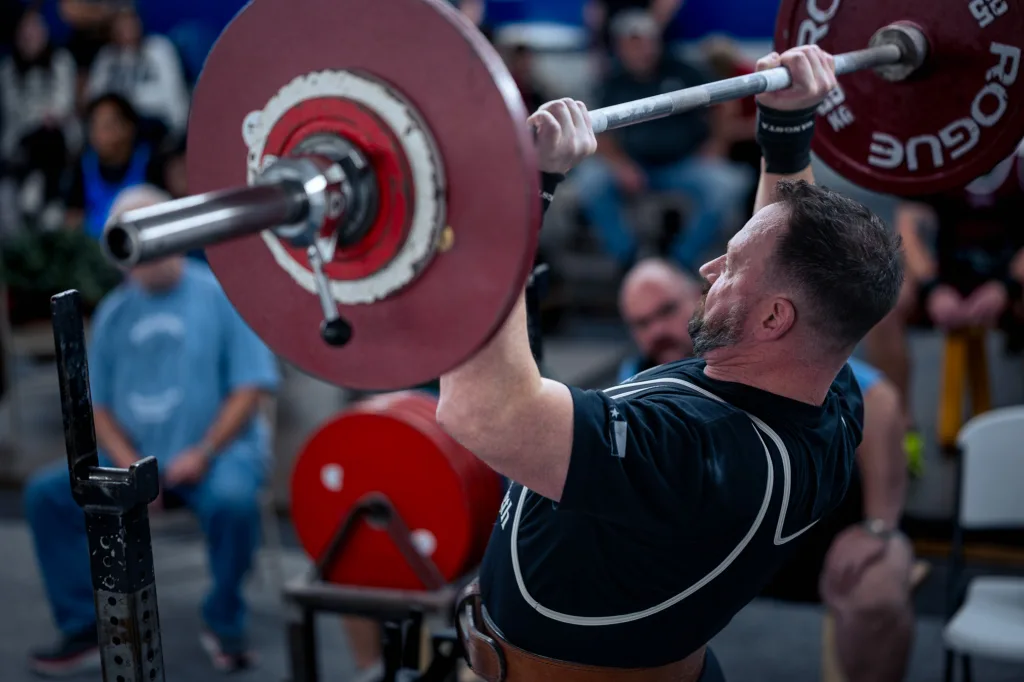Nick Delgadillo, SSC
In Episode 3 of the Stronger is Better Podcast, I detailed the how and why of programming the press for long term progression. People commonly make mistakes in the press from a programming standpoint because they don’t consider that the press requires heavy practice and doesn’t generally behave like the other basic barbell lifts. This is due to the technique component of pressing heavy and the fact that it brings lower systemic stress from a strength training perspective.

Basically, problems with increasing weight on the press come down to two factors – not enough stress from the lift, and the need to practice the lift. Remember that any effective practice needs to be specific to the skill you’re trying to improve. In the case of the press, practice needs to be specific to heavy presses, so sets of 5 (or even sets of 3) may not be heavy enough to improve pressing skill.
What follows is a good companion and summary of the concepts and process I discuss in the episode. The episode goes into deep detail, but this is a good primer and review.
Press Programming Principles
Core concepts for effective overhead press development
Press fails due to insufficient stress, not excessive stress. You need more practice with heavy weight overhead, not more recovery.
Press heavy and press often. The overhead press behaves more like an Olympic lift than a powerlifting movement.
Failed presses are often technique failures, not strength failures. Practice specific to heavy singles is essential.
The press is not systemically stressful enough to require long recovery periods between sessions.
Non-Negotiable Rules
- Never reduce reps or sets
- Always limit rest to 2 minutes max
- Don’t practice failing reps
- Progress goes heavy, not light
- Get stronger, don’t just get tired
- Practice is specific to heavy singles
This is the progression I outline in the episode of how to advance your press programming. I’ve used this exact protocol with clients for a while now.
Press Programming Protocol Reference
| Step | When to Use | Protocol | Key Points |
|---|---|---|---|
| 1 |
Linear progression failing Missing reps in 3×5 |
Complete All Reps
|
Continue until first set drops to 2-3 reps Don’t spend 45+ minutes pressing |
| 2 |
First set only 2-3 reps Time for complexity |
Add Second Press Day
|
5×5 if press very weak relative to squat This setup can last 6-12 months |
| 3 | Can’t increase both days anymore |
Implement Ranges
|
Singles and volume progress separately Limit rest to force adaptation |
| 4 |
Ranges stalling Need more practice |
Add Pin Press
|
Don’t fail pin presses Shrug bar off pins, don’t push |
The flowchart below covers the “triggers” that will help you determine when to move to the next step.
Get all 15 reps, even if it takes more sets
Volume Day: 3×5 or 5×5
Intensity Day: 5-7 singles
10-15 lb ranges for each day
Switch volume to strict press
Third day or add to heavy day
Rotating 5-3-1 protocol
The solution to a press that’s slowing down is to press heavy and to press often. Incorporating heavy singles and specifically practicing pressing a heavy weight over your head as often as is feasible is the key to pressing over 100 lbs if you’re a woman, over 200 lbs if you’re a man, and over 300 lbs if you’re a Strong Man. Don’t let it frustrate you and don’t avoid pressing. The benefits are tremendous from a shoulder health and aesthetics standpoint.
